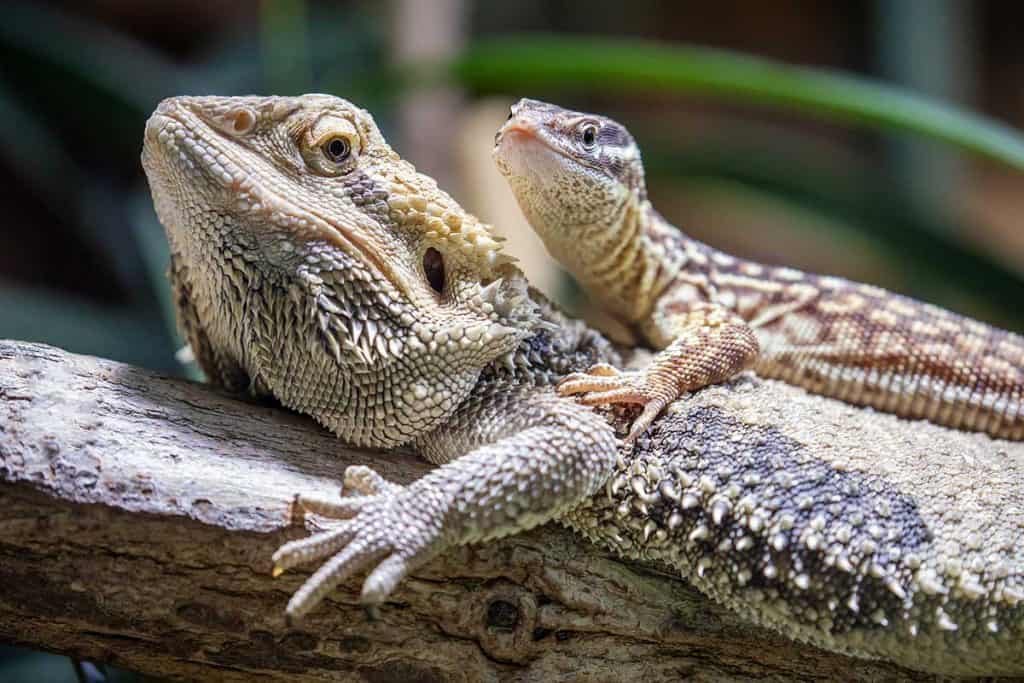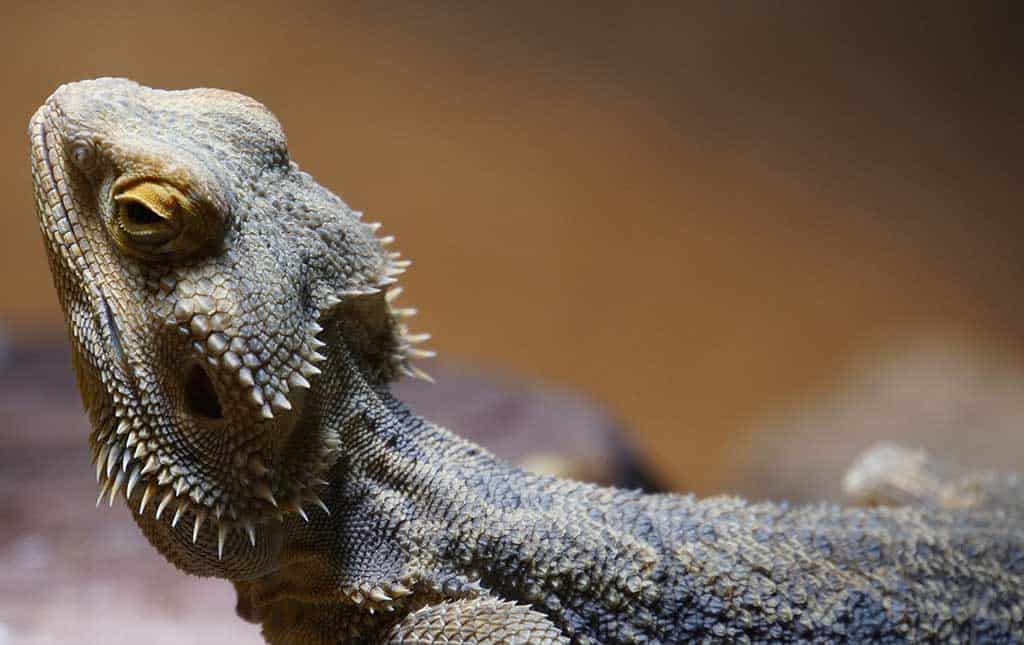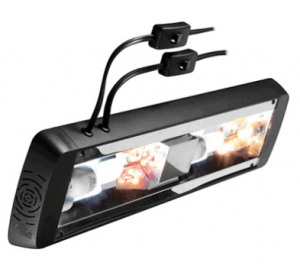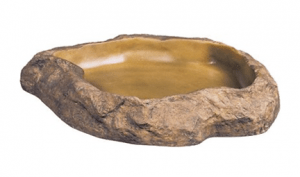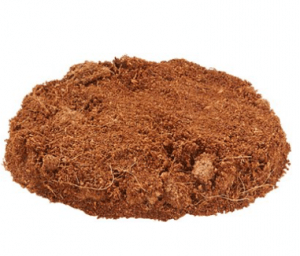Bearded dragons are popular pets because they look cool and they like to snuggle. But how long do bearded dragons live?
Like humans, this coy creature’s lifespan depends on several factors. These may include diet, living conditions, weather, medical care, and much more.
On average, a pet bearded dragon can live a decade or longer. Some live for 15 years, while others outlast cats and dogs, living into their late teens. So let’s talk about how to extend the lifespan of your scale baby. With any luck, they might make it to 25 years and have a silver jubilee cake!
Pet parents often worry whether they’re doing right by their exotic pets. They sometimes wonder if they should have it as a pet at all. Lately, experts are asking whether keeping beardies and other pets is an ethical practice.
After all, pets rely on people to take care of them, and the pets may have a hard time when their humans aren’t around. But research shows pets, like beardies, are healthier and happier than wild animals. And they live longer too. Let’s find out how and why.
The Bearded Dragon Lifespan
In their natural habitat, bearded dragons rarely live past eight years. And most of them don’t live past age five. These lizards are Aussie natives. They live in the desert and subtropical regions of the continent. In the 60s, they became endangered.
In addition to food scarcity and potential predators, a lot of beardies were being trafficked and exported. Their natural numbers have stabilized, so they’re no longer endangered, but it’s still hard to estimate the age of a wild bearded dragon. Or catch one!
The cool black beard makes them look prehistoric or even like dragons. So they make a visually interesting pet.
Bearded dragons are friendly too. Once they accept you as a pet parent, they’ll gladly crawl all over you and even cuddle on occasion.
The genetic size of a bearded dragon can affect their lifespan. Male beardies are bigger, so they live longer. Incidentally, both males and females have beards, but only the males use them defensively. If threatened, his beard puffs and darkens, and he bobs his head.
Bearded Dragon Lifespan by Species
Currently, reptile researchers recognize eight species of bearded dragons:
- Pogona barbata
- Pogona vitticeps – 8 to 12 years
- Pogona henrylawsoni – 6 to 10 years
- Pogona nullarbor
- Pogona microlepidota
- Pogona minor minor
- Pogona minor mitchelli
- Pogona minor minima
Of these eight species, only four are kept as pets, with the P. vitticeps as the most common one. Henrylawsoni, aka Rankins, is popular too. Ask your pet supplier to confirm your species of bearded dragon.
Beardies are often described as ‘lap lizards’ because they’re happy to nestle in your lap, on your neck, or on your shoulder for hours. If you have a familiar relationship with your beardie, you’ll need to potty train them, if you don’t want a mess for the rest of their life.
They come in different colors too, ranging from yellow and tan to green and red. Bearded dragon breeders (aka herpetologists) will sometimes mix species to get a specific color and scale pattern. These are called morphs.
Beyond color, good genetics lengthen their lives too. However, with morphs, predicting a beardie’s lifespan will be difficult because you’ll need to determine the predominant gene.
How Long Do Bearded Dragons Live as Pets?
According to the Guinness Book of Records, the oldest living bearded dragon was Sebastian, who died at 18. His pet parent, Le-Anne Burgess, brought him to her UK home on December 24, 1997. He lived with her until January 24, 2016 when he passed away.
Sebastian may not have lived that long in the wild. In nature, bearded dragons typically live four or five years. Unlike other reptiles, they don’t have detachable tails, so they can’t shed it to escape tight situations or regrow it to protect themselves. Amputation often means death.
Beardies can also be hurt by predators, like hawks, kites, or even cats. And this can happen both in the wild and in your home, so keep your beardie safe. If you have predatory pets (like dogs, cats, or larger lizards than your beardie), don’t leave them together unsupervised. Also, invest in a strong lid for your beardie’s home.
Many reptile tanks are sold without one, so you should order the lid separately. Screen lids are recommended, though they have to be firm enough to hold the UV lights. But screens won’t keep out a cat or dog, they can scratch through it.
So lengthen the life of your bearded dragon by keeping your other pets away from the beardie,. especially at night. It’s fine if they get along and play during the day. But you don’t want their animal instincts to turn playmates into food while you sleep.
Things That Can Shorten Your Bearded Dragon’s Lifespan
The life expectancy of a bearded dragon is anywhere from four to 14 years. That margin can shrink if your beardie has less than optimal conditions. Here’s a quick list of challenges that could lead to discomfort and maybe even premature death:
Calcium Deficiency
When bearded dragons don’t get enough calcium, they can develop metabolic bone disease (MBO). The disease weakens their bones and can lead to twitchy muscles, leg swellings, and brittle joints.
You may notice deformities and weird projections on their spine, tail, or limbs. You can resolve this (or avoid it altogether) by adding calcium and Vitamin D3 to your bearded dragon’s diet. Just sprinkle the supplement on their veggies.
Baby bearded dragons need calcium supplements every two or three days. Adults need it once a week. Get a good quality product for your beardie. And install a basking light as well, since UVA rays help beardies absorb calcium.
Body Temperature Problems
Beardies are cold-blooded, so they need your help regulating their base temperature. Overheating can kill them. Your beardie’s
You should probably avoid automated heating rocks as well. They seem like a good idea, but they can burn your bearded dragon’s tummy. Another thing to consider is the reptile room’s ambient temperature. It easily affects the tank.
Turn off basking lights at night, or use a lower temperature night-light instead. Buy a heat gun so you can confirm the temperature at specific spots, both inside and outside the
Inadequate Sleep
Be sure your lizard has a clean, quiet spot for uninterrupted snoozing. Hammocks are nice, but beardies use them for napping rather than sleeping. For nighttime, they prefer a less visible spot.
In the wild, your beardie might sleep under a rock or up a tree. So provide lots of sleeping spots that mimic their natural habitat. These don’t have to be expensive—you can gather big stones and wood from the backyard.
Or you could put bits of pottery and buckets in the tank. Cut doors into these items so your beardie can sneak in to sleep. And for wood, stone, pottery, or glass, bake or microwave them to kill germs before putting them in the tank.
Too Many Offspring
You’ve probably neutered your cat or dog (if you have one). You can neuter your beardie too, but the risk is high with the invasive surgery required. That said, the process of breeding shortens a female beardie’s life.
It’s not much of an issue with male beardies, but for females, even without a mate, unfertilized eggs can be a problem. If she breeds and hatches her eggs, the strain affects her health. But even if she doesn’t lay viable eggs, it’ll bother her.
Unfertilized eggs can still bind in her womb. This could cause illness and may require pricey surgeries. So unless you plan to become a professional breeder, speak to your vet about how to avoid impregnating your female beardie.
Eating Too Much or Too Little
Starvation is an obvious way to age your bearded dragon prematurely. But overfeeding also strains their limbs and organs. It’s not something we think about with pets—we like them chubby.
But a bearded dragon has a flattened body and a low center of gravity. So even a little excess weight can do a lot of damage. Follow a healthy feeding guide to ensure your bearded dragon gets adequate high-level nutrition.
You should also feed your bearded dragon according to their age. Younger beardies need more insects and worms because they’re growing rapidly. Sixty to 80% of their diet should be protein. Older beardies only need 20% to 40% protein.
Being the ‘Wrong’ Breed
Some species of bearded dragons have longer lifespans. Check your beardie’s species and age expectancy with your vet or the breeder. It can be a tough ask because pet stores aren’t as specific.
This is another reason you should buy your bearded dragon from a reputable breeder. They can point you to the healthiest one and even show you the parents. These tips could help you buy a bearded dragon that will live a longer life.
Ways to Make Your Bearded Dragon Live Longer
Tweaking your bearded dragon’s living conditions could add years to their life. And as they get older, you’ll need to pay a lot more attention to the little things. Here’s what you can do:
Have Both UVA and UVB Lights, Plus a Dark Corner
Bearded dragons need a UVA lamp to maintain body heat and a UVB lamp to aid digestion.
But be sure they have an unlit section when they need to nap or cool off. If you share your bedroom with your beardie, consider getting no-light lamps.
They’re less likely to disrupt sleep, both for you and your scale baby. And buy a dome light that has separate sockets for the
Change the Water Every Day
Your scale baby drinks water, but they sometimes soak in it, too. And nobody likes a dirty bath—not even lizards!
So if you choose to have water inside the enclosure, refresh that water dish daily to avoid infections. But keep it covered to cut down evaporation.
This is crucial, because excess humidity could give your bearded baby a cough, cold, or some other respiratory illness that could shorten their life.
Feed Them the Right Food
Bearded dragons eat insects, fruit, and vegetables. The most healthy insects are dubia roaches, worms, and crickets.
Worms can be fatty though, so offer more vertebrates than invertebrates. And crickets can be tricky to buy in bulk since so many will die in their crate.
Dubias are safe but are illegal in some countries. As for fruits, avoid sugary ones that can over-fatten your lizard. Tart, tangy fruits are a better choice.
Pick a Suitable Substrate
If your beardie has a safe place to sleep, they’ll catch fewer infections and have healthier organs. Try to match the beddings they would have had in the wild. These are mostly desert or semi-arid blends.
If you choose sand as a substrate, make sure it’s a loose type of sand. You don’t want soil that’s designed to stick together (like construction sand) because it’s more likely to form harmful blobs in your beardie’s tummy.
Visit the Vet
See the vet at least once a year. And check your beardie’s droppings. Brown and firm is good. Yellow and runny is bad. Vets can cost over $100 per visit, so set some cash aside for beardie health emergencies.
With these simple tips and tricks, your beloved beardie can live far longer than expected.
FAQs About Bearded Dragon Lifespans
Do beds help bearded dragons live longer?
Your beardie can be potty-trained, but they mostly just poop on the floor of their
Do ‘hide boxes’ help bearded dragons relax?
Your scale baby lives in a glass house, so they’re constantly on display. Offering an optional hiding spot will lower their stress levels, which extends their lifespans too.
How much water do beardies need to live?
Every day, a bearded dragon needs to drink 0.6 fluid ounces to 1 fluid ounce per pound of body mass. You can also soak your beardie babies once a week and adults once a month.
Do male beardies live longer than female ones?
Male bearded dragons are generally larger than females. Those extra ounces makes them more hardy, so yes, they live longer. Also, we’ve mentioned how laying eggs lowers the lifespan of female beardies, so that gives their males a longer life too.
My bearded dragon is a weird color and isn’t moving. Is it dead?
Many bearded dragons turn a lighter shade at night. They can also sometimes sleep for days, weeks, or months, aka brumation, which is short-term reptile hibernation.
So What’s the Average Lifespan of a Bearded Dragon?
If your scale baby is happy, healthy, and relatively unharassed, expect it to live 10-15 years. And there’s a lot you can do to extend your bearded dragon’s life expectancy. Provide:
- Healthy food
- Fresh water
- Light and a dark corner
- Suitable bedding
- Consistent company
Maintain a clean

